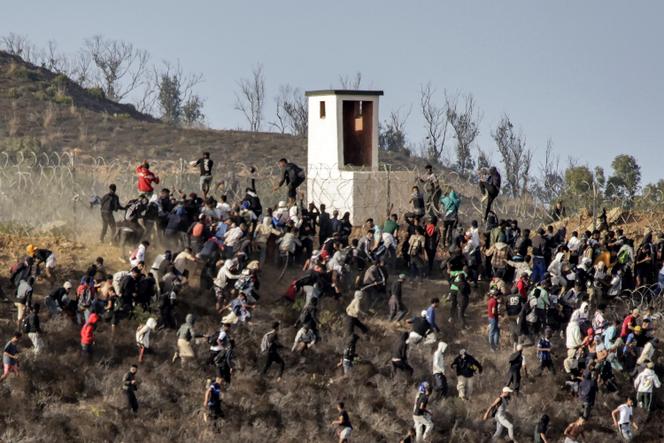


The situation is extraordinary. Since Wednesday, September 11, approximately 4,000 Moroccans, including almost 150 minors, suspected of trying to illegally enter the Spanish enclave of Ceuta have been arrested or turned back, according to the Moroccan Interior Ministry. Messages circulating on social media have called for people to join this territory on Sunday, September 15.
Although law enforcement stopped hundreds of people gathered near the border that day, most of them were arrested beforehand in the surrounding towns of M'diq, Tétouan and Tangiers, according to community activists. Officially, no one managed to cross over into Spain, but according to eyewitness accounts, around 20 people from the town of El-Jadida, 500 kilometers to the south, did manage to do so.
The significant number of Moroccan citizens involved is surprising, as up until now, these attempts to breach the border have involved mostly people from sub-Saharan Africa. On May 17 and 18, 2021, during a diplomatic crisis between Rabat and Madrid, an estimated 8,000 to 12,000 Moroccans. This followed Spain's decision to offer medical treatment to Brahim Ghali, leader of the Sahrawi pro-independence movement, which Morocco criticized. "But these departures benefited from the tacit complicity of the Moroccan authorities," said researcher Ali Zoubeidi, who specializes in migration issues and is carrying out a study on-site.
There's nothing like this happening today, he said, viewing the events of September 15 as the sign of a new modus operandi: "It is no longer a question of clandestine activity in small groups, sometimes with the help of smugglers, as the Moroccans used to do, but of mass mobilization and open confrontation with the police."
While not a new phenomenon, social media has become more central than ever in the planning of these crossing attempts. Entire communities, organized by city or neighborhood, are using platforms like WhatsApp and Facebook to coordinate their efforts.
TikTok is also playing a significant role, with many would-be emigrants sharing their experiences. One example, frequently cited in the Spanish press, is of 19-year-old Chaimae El Grini from Martil, 35 kilometers south of Ceuta. A photo she posted on August 21, showing her smiling in a wetsuit with wet hair and a thumbs-up after a five-hour swim to Ceuta, has gained over four million views, highlighting the influence of TikTok in Morocco.
Others were not so lucky. The Northern Observatory for Human Rights estimates that around 40 Moroccans from Fnideq and Belyounech, the two municipalities bordering Ceuta, have died or disappeared in the Mediterranean since the beginning of the year.
You have 60.19% of this article left to read. The rest is for subscribers only.
